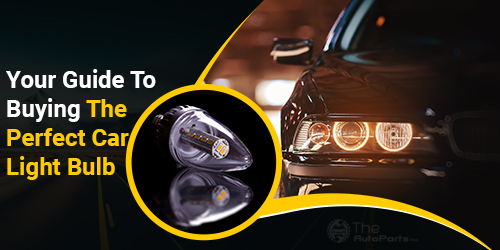For some inexplicable reason, many car owners do not consider the condition of their headlights until it is too late. Perhaps they are on a long trip when their headlights suddenly go out, or they drive to the shop one evening only to be stopped by a pleasant police officer who says, “Did you realise you had a headlight out?”
What information should every driver and vehicle owner be aware of about basic headlight health, maintenance, and replacement? For starters, you’ll be in danger on dark roads if your headlights go out altogether or just fade to a reduced beam strength. This is because people will not notice you and you will not be able to see them or the road properly.
Why take the chance of receiving a ticket or being in an accident? You don’t have to put yourself in that scenario. Since headlight bulb replacement is quite inexpensive in comparison to most other car maintenance tasks, you can complete the operation quickly and get back on the road safely.
If you have a typical halogen H11 headlamp, you may replace it with a more energy-efficient option, such as light-emitting diode (LED) or high-intensity discharge (HID) headlight bulbs. These newest bulb designs provide dramatically improved visibility and brightness. A headlight LED bulb, for example, may increase visibility by up to 25% while also providing around 30% more brightness. There’s no need to drive about town or on roads with poor lighting.
How Do You Select the Best Headlight Bulb for Your Vehicle?
The main guideline of selecting headlight bulbs is to understand the three major types of bulbs and which one is best suited for your specific car. It should be noted that each vehicle has its unique type of light. There are three fundamental types: Xenon/HID, halogen, and LED. The great majority of automobiles are delivered with halogen lights, although many high-end, newer vehicles feature LED lights.
Xenon/HID employs gas (specifically, xenon gas) instead of the traditional filament that glows when heated. HIDs last far longer, operate at lower temperatures, and light much brighter than halogens. If you want to install HIDs on your car, you’ll probably need to hire a professional and expect to pay more than ordinary halogen lights.
Traditional lights are not as bright as halogen headlights, which create a very strong beam of light by heating a filament system within a closed environment of halogen gas.
LEDs require far less electrical power than halogens and so run at significantly lower temperatures. These modern lights also outlast halogen lights and provide a beautiful bright, constant beam of light that is broader and more luminous than previous types of headlights.
Why Should You Replace Your Headlights?
Better lighting is about much more than just having a sleek, attractive ride. Here are a few reasons why individuals replace their vehicle’s headlights:
- The vehicle’s original lights were subpar manufacturer bulbs that were dim.
- Only because faulty shocks and too much off-road driving, the beams became unequal and unsteady.
- Newer bulbs are competitively priced and last a long period, providing excellent value.
- LED and HID bulbs outperform halogens and improve visibility of other vehicles and the road at night.
- Since clean, sharp beams include even rays that don’t have the human eye working as hard to view the road and other cars, new headlights promise less eye strain.
- Replacing headlights is a reasonably simple do-it-yourself repair; you don’t need to be a “car man” to perform it.
- A new set of lights improves the appearance of any vehicle, regardless of its age.
When Should You Replace Your Headlights?
Replacing bulbs solely when they burn out is like putting off seeing a doctor until you have a heart attack. It is not a good plan. Lights that have burned out are exceedingly unsafe and frequently cause catastrophic accidents. Remember, police frequently charge drivers who merely forget to switch on their headlights—driving with inoperable headlights is asking for a hefty punishment.
So, when should you change your headlights? When you get your automobile serviced, always have your technician check your headlights. That’s one way to remain on top of things. Furthermore, if you observe fading or “fluttering” beams, replace them as soon as possible. If you feel your headlights are in poor condition, do not drive in the dark.
Replace bulbs in pairs to ensure that the beams are equally matched in direction and intensity. Don’t take any chances with your safety! If each side has distinct high-beam and low-beam lights, replace all four anytime one fails.
Headlights are an important part of your vehicle’s safety equipment, and they are just as important for your safety as airbags, brakes, and all of the other potentially life-saving systems that you rely on every time you get behind the wheel & drive.
